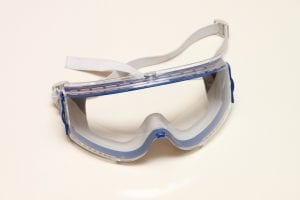March is Workplace Eye Wellness Month. Statistics show that 2,000 Americans suffer from eye injuries each day. Furthermore, 1 million Americans have experienced some type of vision loss caused by eye injury. Eye injuries cost more than $300 million annually in terms of medical expenses, workmen’s compensation and lost time at work.

(Pixabay / byrev)
Simply using proper eye protection can help prevent injuries. The Occupational Safety and Health Administration (OSHA) requires employers to provide the necessary eye protection to their workers who are exposed to the following eye hazards:
- Flying particles
- Acids and caustic liquids
- Liquid chemicals
- Chemical gases and vapors
- Dangerous light radiation
- Molten metal
Eye Protection
The most commonly used eye protection for workers includes:
- Safety glasses – This eyewear protects against flying particles and is available with prescription lenses. Safety glasses look like regular glasses, though some may include protection on the sides. Other safety glasses use shaded lenses for additional protection against the sun.
- Safety goggles – Goggles offer more thorough protection than glasses because they seal the face against hazards. They provide protection against liquid chemicals and other substances that could splash into the eyes. Safety glasses may be either ventilated or non-ventilated. Non-ventilated goggles are recommended around dangerous chemicals.
- Face shields – Shields provide protection for the entire face. Face shields should be worn together with safety glasses or goggles.
- Welding mask – Welders wear these coverings to protect their eyes and face from light radiation. Welding masks have protective shades that can vary in strength depending on job requirements.
Tips for Preventing Eye Injury
Observe the following safety tips to stay safe:
- Eye protection should meet American National Standards Institute standards for personal Occupational and Educational Personal Eye and Face Protection Devices (ANSI Z87.1).
- Do not substitute prescription glasses for eye protection.
- Remember that safety glasses provide only the minimum level of eye protection.
- Ensure that eye protection fits well and does not impair the wearer’s vision.
- Keep your eye protection equipment clean.
- Wear eye protection when chemicals are present.
- Do not wear contact lenses when chemicals are present.
- Wear eye protection when there are flying particles in the work area.
- Wear a mask when doing a welding job.
- Replace protective eyewear when it is damaged.
